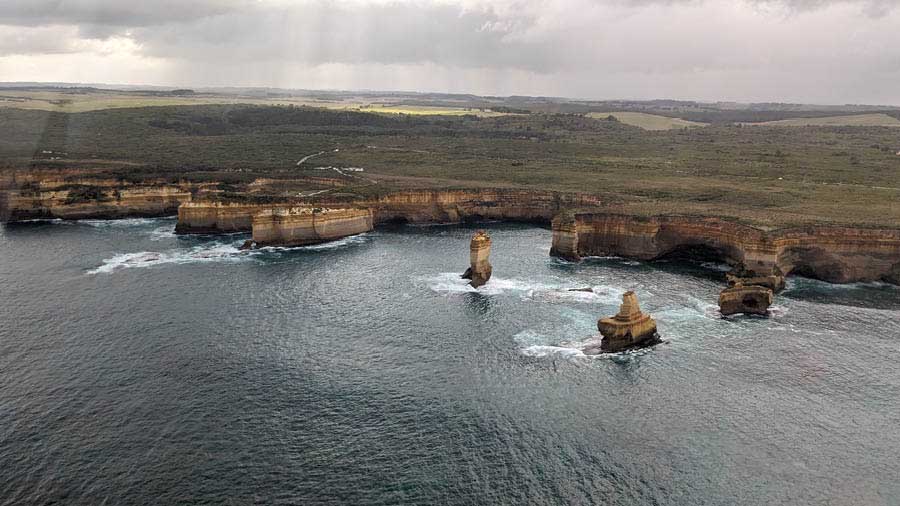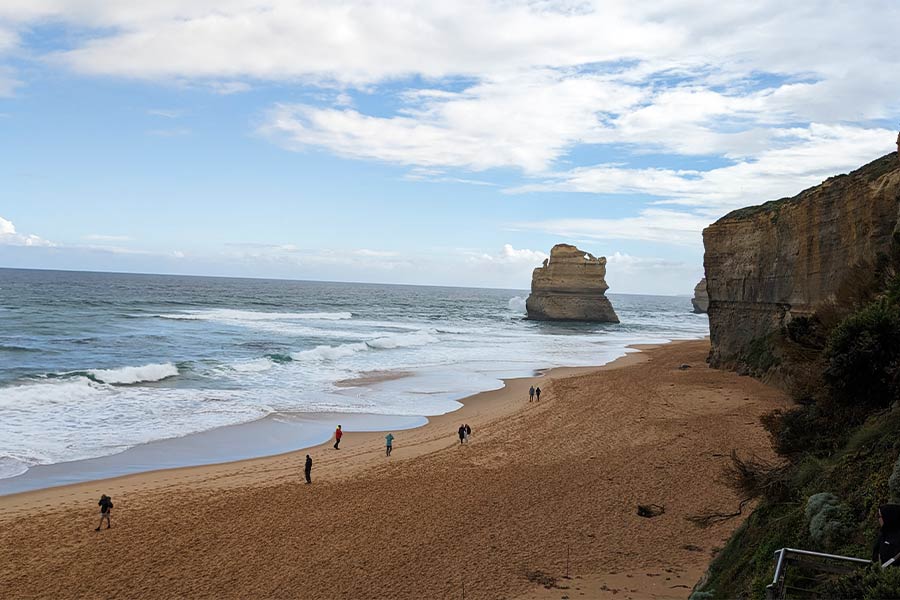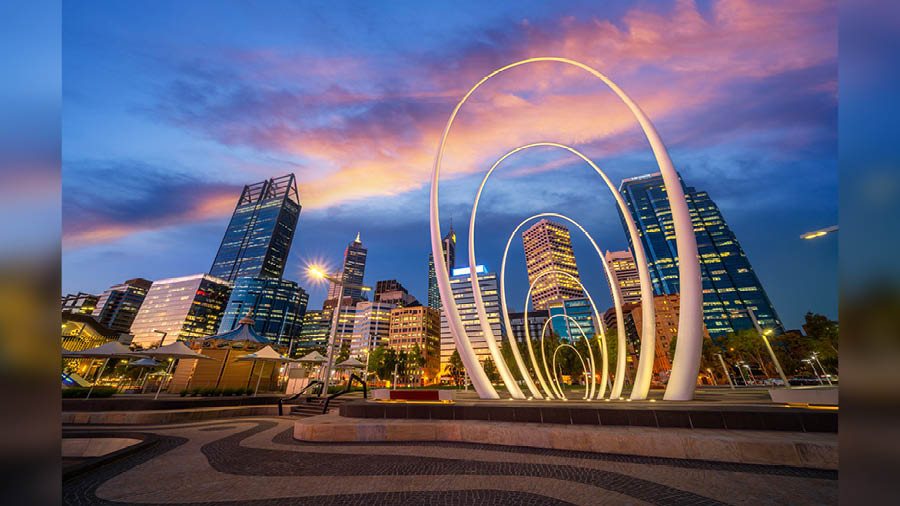If you’ve heard about the 12 Apostles near Melbourne in Australia, you’ve probably already pencilled the ‘Great Ocean Road’ into your travel bucket list. These stunning, craggy limestone cliffs along Victoria’s Southern Ocean have been immortalised in popular culture. While these tall limestone stacks make up one of the most spectacular coastal sights anywhere in the world, it’s the journey to these cliffs that is the true destination. I’ve done this road trip on two prior occasions, where my journey began in Melbourne. This time I around, I flipped it and started my journey in reverse from the 12 Apostles, on a chopper.
Thrill a minute

View from the chopper Ashwin Rajagopalan
There’s something about a helicopter ride that pumps up your adrenaline levels. 12 Apostles Helicopters offers multiple chopper rides that hug the coast and offer you bird’s-eye views of some of the best-known landmarks along the Southern Ocean. I’d recommend their shortest flight – a 16-minute ride (Rs 9,300) that takes you from 12 Apostles to London Bridge. It covers five landmarks in a 45-km journey that includes the 12 Apostles and other iconic landmarks in the area. One of Australia’s most visited sites was created by constant erosion of the limestone cliffs of the mainland beginning 10-20 million years ago. These caves eventually became arches and when they collapsed rock stacks up to 45 metres high were left isolated from the shore. Despite the name there were only nine (and not 12) rock formations. Now, only seven stacks remain at the Twelve Apostles viewpoint.
Up close and personal
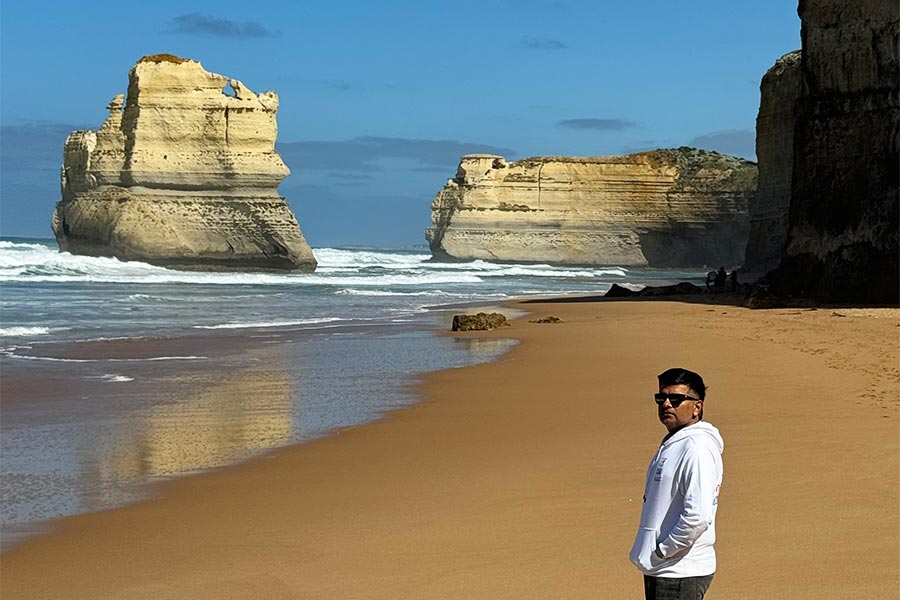
The author takes in the view from near Gibson Steps Ashwin Rajagopalan
While the chopper flight was sensational, the ‘high point’ of my day was actually when I descended from the highs of the chopper flight and walked down to the beach. My first stop on the way to Melbourne after a quick walk around the Twelve Apostles Marine National Park was Gibson Steps. These 86 stairs take you all the way down to the beach where you can view two imposing rock stacks from sea level. Gog and Magog rise to 70 metres and are not considered part of the 12 Apostles formation. This a great spot for photographs with the reflections of these rock stacks adding to the drama.
The oldest surviving lighthouse in mainland Australia
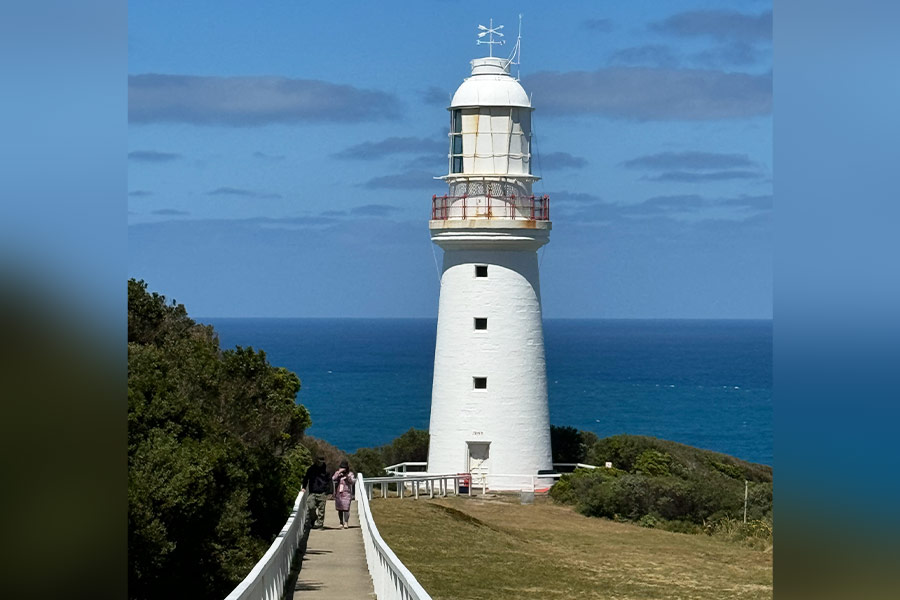
Cape Otway Lightstation – established in 1848 Ashwin Rajagopalan
A lighthouse stop is almost a given, in every coastal drive across the world. There are at least two lighthouses along this coastal drive that live up to those images with whitewashed structures and sweeping views. I stopped at the Split Point lighthouse (constructed in 1891) during my first two drives along the Victorian coast. But if you have time for just one stop, I’d recommend one of Australia’s most historic lighthouses – Cape Otway Lightstation – that was established in 1848, to guide incoming ships through the ‘eye of the needle’, the dangerous western entrance to Bass Strait between Victoria’s south coast and King Island. It’s the oldest surviving lighthouse in mainland Australia, although it was decommissioned in 1994.
Pitstops galore
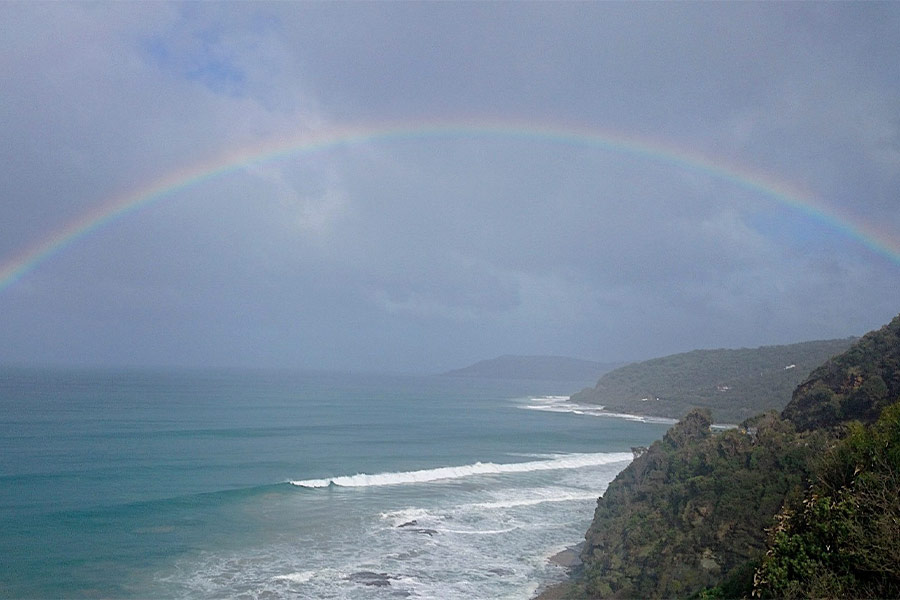
Rainbow spotting along the Great Ocean Road Ashwin Rajagopalan
Are you someone who likes to drive at leisure without a rigid schedule? Or are you the type who makes a tight itinerary with a focus on your ‘to do’ list. The Great Ocean Road panders to both types of travellers. There are multiple coastal towns like Anglesea or Lorne or Apollo Bay that are all charming in their own right. From sandy white beaches, barracuda fishing to tropical waterfalls, there’s a whole lot of experiences in the mix. If you’d rather not immerse yourself in the charms of these small towns and keep driving, do look out for the large rainbows (if you’re lucky) and make the customary photo stop at Teddys Lookout, a viewing platform that gives you 360-degree views of the Great Ocean road and the ocean. It’s at such spots that you can appreciate the blood sweat and tears that went into making this road possible. A 240-km long road that was originally constructed by hand when 3,000 returned servicemen built this as a war memorial for fellow soldiers who lost their lives in World War I. It took more than a decade (construction started in 1919 with explosives, wheelbarrows and basic machinery) to complete this iconic highway by 1932.
Surf’s up
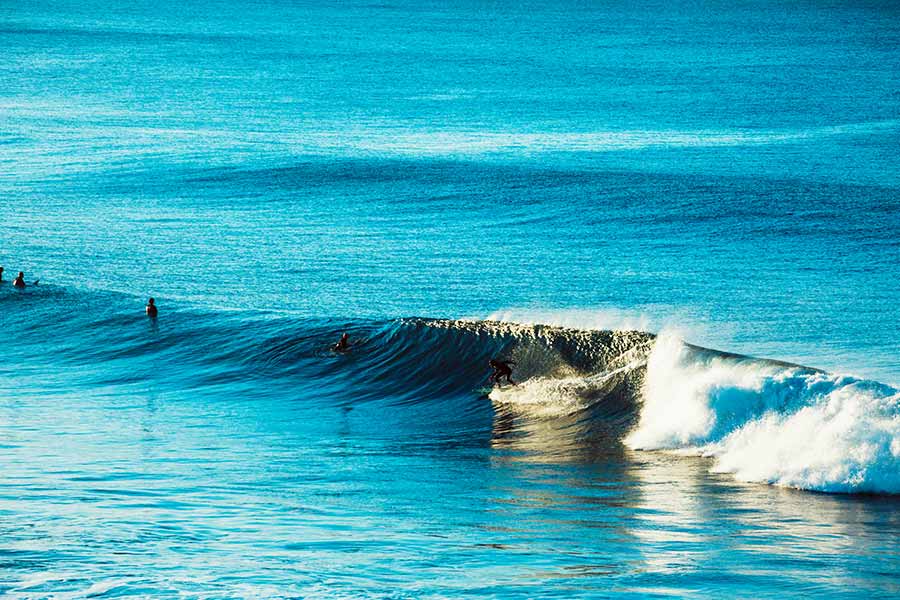
Waves and surfers at Bells Beach, near Torquay Shutterstock
You can’t drive past a long coastal stretch without experiencing Australia’s romance with surfing. Do make a stop at Bells Beach near Torquay, a spiritual hub of sorts for Australia’s large surfing community. Torquay hosts the Rip Curl Pro Surf and Music Festival – the world’s longest-running surfing competition. This coastal town is home to some of the country’s iconic surfing brands like Rip Curl, you might be able to score deals at some of the outlet stores in Torquay.
It's impossible to cover the highlights of the Great Ocean Road in one drive (Most maps peg it at 50 stops). After three drives I’ve still not covered all these 50 stops. There’s Warrnambool where whale sightings are not uncommon, the Geelong Bollards are a series of 100 brightly painted icons along the shoreline of Victoria’s second largest city and scores of fabulous restaurants in towns like Port Campbell. Three days is a good time if you want to cover the key highlights like the 12 Apostles, but you’ll need to keep coming back to truly discover the Great Ocean Road. It grows on you.

